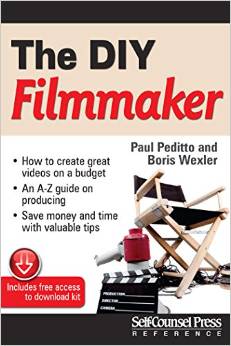Format isn’t sexy.
I’d recommend you study it only under special circumstances: Like, you want to sell your script.
Object Lesson 4: Learn the rules. Then learn how to break the rules.
Use professional software. Final Draft and Movie Magic are best. Free programs exist: www.celtx.com is the Columbia Film & Video School broke-ass student program of choice. Generally fine, it has a glitch or two (dialogue can drop off at page end, short pages, etc.) Please don’t use Word.
Read screenplays. There are thousands available online. Start with www.script-o-rama.com or www.simplyscripts.com Fan of Alien 3? (Ok, nobody’s a fan of Alien 3, but if you were…I’m just sayin’…) You could go to Drew’s and find the William Gibson draft, two revised drafts, and a pair of “unused drafts.” Grab the Director’s cut DVD, curl up with some Orville Redenbacher’s Kettle Korn and check out what 17 drafts have wrought.
When studying scripts, you’ll notice something: There are as many styles as writers. A Woody Allen script looks different than a Charlie Kaufman script. Star Wars looks nothing like Sin City, which bears small resemblance to Dark Knight. Being a student of screenwriting craft means reading screenplays. Want to hone your own style? Read screenplays.
Here are some general guidelines:
SCENE HEADINGS: Every scene opens with a scene heading. Is the scene indoors? Use INT. Outdoors is EXT. Follow this with location. INT. ROOM, EXT. STREET. Be as specific as possible with your locations. Next comes time of day. I mostly keep to these five: DAY, NIGHT, CONTINUOUS, LATER, and SAME. I am not a fan of EARLY AFTERNOON, TWILIGHT, or DAWN. The only reason you’d say INT. ROOM- 7:01AM, is if it’s necessary to plot, otherwise keep it simple: DAY, NIGHT, LATER, SAME, CONTINUOUS.
SCENE HEADING USES:
Use a scene heading when you change time or location.
Use a scene heading when you indicate a flashback, montage, time frame, or a dream sequence.
INT. JIM’S HOUSE- DAY (1962)
INT. JIM’S JOINT- NIGHT (FLASHBACK)
INT. JIM’S PLACE- DAY (DREAM SEQUENCE)
SECONDARY SCENE HEADINGS: Use these if you cut to multiple areas within a single location. Like this…
INT. CLEAVER HOME – DAY
Mom makes breakfast at the kitchen stove.
MOM
Beaver!
BEAVER (O.S)
Coming!
BATHROOM
Beaver’s right arm works furiously, closing the jar of zit cream.
BEAVER
Why can’t I get five minutes alone! Wally gets five minutes!
MOM (O.S.)
Get down here now, mister!
KITCHEN
Mom slams a stack of pancakes on the table.
MOM
I know what you’re doing up there, young man!
BATHROOM
Beaver tucks up his well-thumbed Playboy and stalks out.
Using secondary scene headings you can cut between different groups within the same room…
INT. PARTY HOUSE- NIGHT
Vanessa holds court over her crew, Appletini in hand.
VANESSA
Oh my God, look what the cat puked up.
DOOR WAY
Janine enters, with Vanessa’s Ex-Beau in tow. Looking across the room…
EX-BEAU
Uh-oh.
Both stare at Vanessa…
EX-BEAU
Maybe we should go.
JANINE
No, no…
(cuddles with Ex-Beau)
I want her to see what she’s missing.
JESSICA
Slams her appletini down in a gulp…
JESSICA
The little slut dies tonight.
SCREEN DIRECTION: BASICS
In Forrest Gump-ese: Some people call them action lines. Some people call it body copy. Others call it narrative description.
Here, we’ll call it screen direction.
When you think about it, aside from the scene headings, there are only two parts to a screenplay: Screen Direction and Dialogue.
What is screen direction? At its most basic level, screen direction is what the camera sees. Let me start with what is not screen direction…
The non-visual is not screen direction. “Sandy realizes….” “Wally thinks…” How can the camera see someone thinking? If a giant light bulb appears over his head, write it in. If he’s sitting on the dock of the bay thinking, all the camera can see is him sitting on the dock of the bay. In general, just describe the visual, what the camera sees.
Notice I said “in general.” There is another component to writing good screen direction which we’ll get to shortly. This leads us to the legal department’s favorite saying:
Object Lesson 5: There is no one single way to write a screenplay.
Pros cheat. We’ll go over ways they break the rules, but first let’s learn the rules. Ok?

